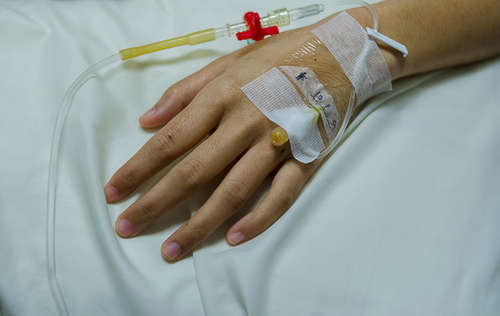
Every four minutes someone in the US is diagnosed with a blood cancer. It might be lymphoma or leukemia, myeloma or myelodysplastic syndromes (MDS). While we have made great strides in treating some of these over the years, we still have a long way to go. Need proof? Well, every nine minutes someone in the US dies from a blood cancer.
Because of that need, the CIRM Board last week approved $3.5 million to help fund the search for a more effective, more efficient way to treat people suffering from blood cancer.
The Board funded a program by Angiocrine Biosciences, a San Diego-based company that is developing a new method for transplanting cord blood into patients.
Now cord blood transplants have been around for decades and they can be very effective. But they can also cause serious, even life-threatening complications. And they have limitations. For example some cord blood units are small and don’t have as many stem cells as the doctors would like. As a result, patients may need to spend longer in the hospital recovering from the procedure, putting them at increased risk of viral infections or pneumonia. Alternatively, doctors could use more than one cord blood unit for each transplant and while that seems to be an effective alternative, some studies suggest it can also carry an increased risk for serious complications such as Graft-versus-host disease (GVHD) where the newly transplanted cells attack the patient’s body.
To get around these issues, Angiocrine is developing a product called AB-110. This takes stem cells from cord blood, uses a specialized manufacturing facility to expand their numbers and then mixes them with genetically modified endothelial cells, the kind of cell that forms the lining of blood vessels.
It’s hoped that AB-110 will reduce the complications and increase the chances the transplanted cells will successfully engraft, meaning they start growing and creating new, healthy, blood cells.
In a news release CIRM’s President and CEO, C. Randal Mills, PhD, says this program fits in perfectly with our mission of accelerating stem cell treatments to patients with unmet medical needs:
“This project aims to do precisely that, speeding up the body’s ability to create new white blood cells and platelets – both essential qualities when treating deadly diseases like leukemia and lymphoma. Under CIRM 2.0, we are trying to create a pipeline of products that move out of the lab and into clinical trials in people, and we’re hopeful this program will demonstrate it’s potential and get approval from the Food and Drug Administration (FDA) to begin a clinical trial.”
Everyone at Angiocrine and CIRM will work as hard as we can to move this research toward a clinical trial as fast as we can. But in the meantime there are tens of thousands of critically ill people in desperate need of a life-saving transplant.
One way of helping those in need is for new parents to donate their child’s umbilical cord blood to the state’s umbilical cord blood collection program. This is a safe procedure that doesn’t harm the baby but could save someone’s life.
The cord blood program is housed at the UC Davis Institute for Regenerative Cures – a facility CIRM helped build and where we fund many great projects. This program is particularly important because it collects and stores cord blood units that reflect the state’s diverse communities, and that are available to all those in need of a transplant.
The bank also is a rich source of cord blood units for research, particularly for stem cell research, which will hopefully lead to even more effective therapies in the future.
That’s excellent news Kevin! My mother has Multiple Myeloma a disease with no cure! The promise of stem cells treating her condition is music to my ears! Thanks for writing this important story! Stem cells are the future of medicine!
This will be very helpful to treat people suffering from blood cancer.